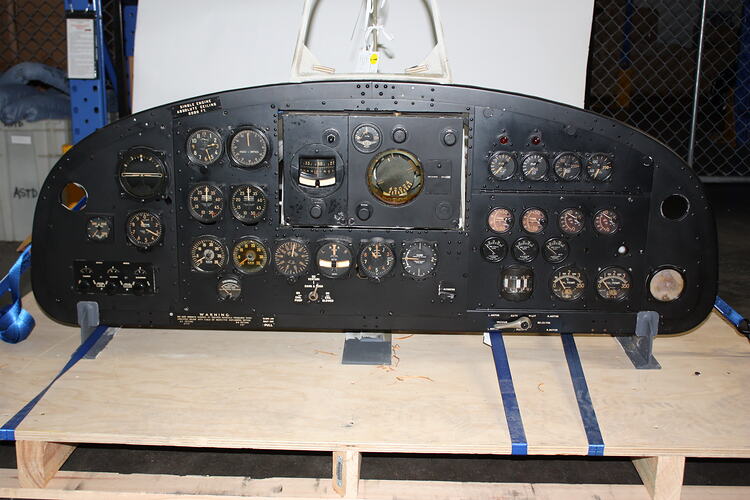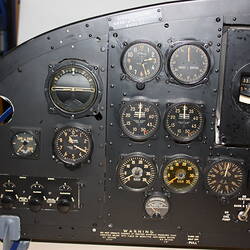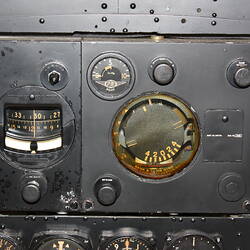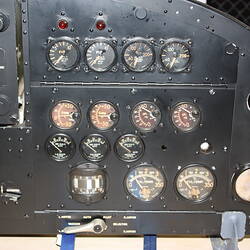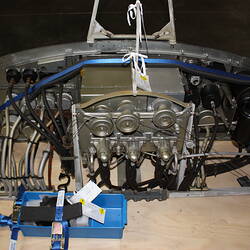Summary
Instrument panel from Douglas DC-2 with the civil registration VH-USY, named as 'Bungana' and operated by Holymans Airways Pty Ltd from May 1936. Holymans had lost two wood and fabric DH 86 aircraft over Bass Strait in 1934-35. Bungana arrived in Melbourne on the SS Hauraki on 14 April 1936. It took about five hours to transport it by road to Essendon airfield due to size restrictions in city streets and a low railway bridge in Flemington Road. The aircraft was assembled then test-flown by (Douglas export sales manager) Victor.E Bertrandias and Captain Ken Frewin (Holymans). Bertrandias had a distinguished aviation career in civilian and military roles and eventually rose to the rank of Major General in the USAF. He was in charge of the US 5th Air Force Base Air Depot at Townsville during World War II. Ken Frewin later became a test pilot for the Commonwealth Aircraft Corporation.
Bungana was the first all-metal monoplane aircraft used for regular passenger services in Australia. The first official service flown was a Sydney to Melbourne flight via Canberra on 5 May 1936. Thereafter Bungana was mostly used on the Melbourne-Tasmania service which took about one hour and forty five minutes each way. The aircraft was also notable for being one of the first to use 'air hostesses' in Australia. Rita Grueber and Blanche Due were employed in early 1936 by Holymans and Grueber was on board for Bungana's first flight along with noted air navigator Harold Gatty, the local sales representative for Douglas. From November 1936, Holymans became a part of Australian National Airways Pty Ltd.
By 1937-38 Bungana was mostly used on the Adelaide-Perth service which was run in association with Airlines of Australia. Bungana remained in service with ANA until 10 September 1946 with a total flying time of some 33,000 hours over 5,445,000 miles carrying about 50,000 passengers. During World War II the aircraft was damaged in several incidents during passenger services mostly between Adelaide and Perth. Bungana was also chartered for military air transport duties in northern Australia. The instrument panel was donated to the Museum by Mr Colgrave of ANA on 29 October 1946. The rest of the aircraft was purchased by a cafe owner who transported the machine (less engines) to Red Cliffs near Mildura. It was later broken up for parts used in a motor launch (named Bungana) and the rear fuselage was reported to have been turned into a caravan.
More Information
-
Collecting Areas
-
Acquisition Information
Donation from Australian National Airways Pty Ltd (ANA), 29 Oct 1946
-
User
-
Model Name or Number
-
Brand Names
-
Classification
-
Category
-
Discipline
-
Type of item
-
Overall Dimensions
1420 mm (Length), 480 mm (Width), 840 mm (Height)
-
Dimensions
142 cm (Length), 79 cm (Height)
Measurement From Conservation. ERROR:height:1=D: 48cm Measuring Method: Maximum dimensions
-
Dimensions
890 (Length), 884 (Width), 245 (Height)
Measurement From Conservation.
-
Keywords
Aeronautical Instruments, Aeroplane Components, Instrument Panels, Passenger Aircraft
